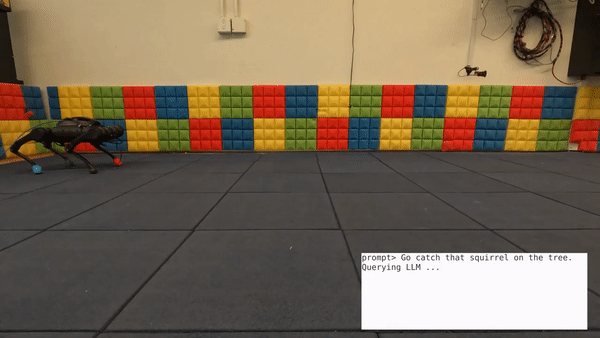Google researchers may have finally found a tech solution for the laborious task of training stubborn dogs to listen to commands. That is, of course, if you’re willing to opt for a robot dog.
A group of research scientists at Google DeepMind designed a large language model called SayTap’s capable of translating a variety of commands a human might give to a dog into a format a Quadrupedal dog-like robot can understand. That model resulted in the dog-like robot being able to understand basic commands like walking forward and backward as well as more situational, complex concepts like catching a squirrel or running quickly over a hot surface.
To do all this, the DeepMind researchers assigned a desired “foot contact pattern” to the quadrupedal robot where 1’s represented its feet on the ground and 0’s represented its feet in the air. Those inputs were then mapped out to each four legs in various combinations to teach the robo-dog how to walk, trot, or jump in place. The researchers said these combinations of foot contact patterns serve as a “new interface between natural language user commands and the locomotion controller.” In the video below, for example, a researcher asks the dog to “trot forward slowly.” The box in the bottom shows a computer model translating that English command into the corresponding binary associated with the task. That’s then sent to the robo-dog, who dutifully complies like a good boy.

That may look cool but successfully executing a basic command like “move forward” isn’t all that advanced, according to the researchers. What’s more interesting, they noted, is SayTap’s ability to “process unstructured and vague instructions.” By just providing the model with a brief hint, the researchers were able to successfully command the robotic dogs to jump up and down when it was told “we are going on a picnic.” In another test, the robot dog knew to start running quickly after the promoter told it to “act as if the ground is very hot.” In maybe the funniest example, the dog even slowly backpedaled after being told to get away from a squirrel. Many real dog owners would beg for that level of obedience.
“SayTap introduces desired foot contact patterns as a new interface between natural language and the low-level controller,” the researchers wrote in a recent blog post. “This new interface is straightforward and flexible, moreover, it allows a robot to follow both direct instructions and commands that do not explicitly state how the robot should react.”
The researchers involved did not immediately respond to Gizmodo’s request for comment.
Though most of the wider public has come to associate large language models for their ability to gin up book-length prose or oddball original images in a matter of seconds, the StayTap research highlights the powers these systems can have in converting complex human language into prompts understandable by machines. The researchers describe StayTap as a controller “that can be transferred to real robot hardware,” but it’s not too hard to see how similar advancement could one day let humans actually interest advanced robots by simply speaking to them like another human being.
